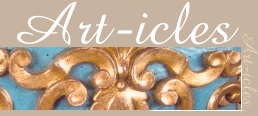      
|

Marco Polo and the Silk Route (date : 15 October 2001), The name of Marco Polo brings an almost mythical dimension to the early days of great international Venetian trade; he was not, however, the originator of the Silk Route. This had first opened around 100 BC when the Emperor Wudi of the Han dynasty, in bringing political stability to a 6000 km strip of central Asia, assured the link between the East and the West, allowing economic, intellectual and spiritual exchanges. In 476 AD with the fall of the Roman Empire and, later, with the rise of Islam this link would break. It was not until the 13th century, after the Mongol reunification, that travellers, such as Marco Polo, could again reach China via Damascus. Marco Polo (Venice, circa 1254-1324) accompanied his father and his uncle, both traders, for the first time in 1271. It was their second journey to China. The stopped successively at Acre (Israel) and Ormuz, mouth of the Persian Gulf. They crossed Iran and travelled up the river Oxus in Central Asia. They crossed the region of Pamir and then had to confront the Ghobi Desert. Finally, in 1275, they arrived at the court of Kubla Khan. Marco Polo became the Emperor's Ambassador and was the Governor of the Chinese city of Yang-Tzao for three years. In 1298 Marco Polo was imprisoned. He had been commander of a Venetian galley during a battle between Genoa and Venice. During his captivity, until 1299, he dictated the story of his travels - The Book of Wonders - to a cellmate. For the first time, serious data about the Orient (China, Siam, Japan, Java, Cochin, Ceylon, Tibet and Burma) were collected together in the same book, which was then the only geographical reference. Furthermore, he awakened in Christopher Columbus a certain taste for the Orient. He also suggested the possibility of reaching Asia by circumnavigating Africa, a feat finally achieved in 1497-1498 by the Portuguese navigator Vasco de Gama. |
  |
|||
|
|||||